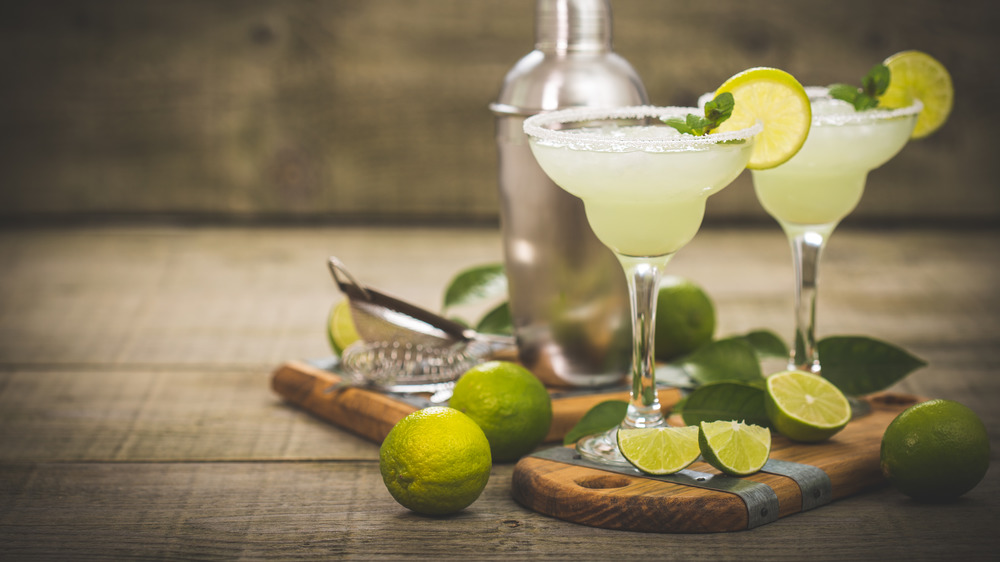Why You May Want To Rethink The Lime In Your Drink
That gnarly rash you got last summer? You may've *thought* it was poison ivy or some wicked sun poisoning, but there's a chance — particularly if you enjoyed a lime-garnished beverage — that you experienced a condition called phytophotodermatitis. What's that, you ask? According to Healthline, it's a type of contact dermatitis that occurs when the skin interacts with furocoumarins, a chemical that's in certain plants (particularly limes), and is then exposed to the sun. The word's meaning is right there when you break it down: phyto means "plant," photo means "light," and dermatitis means "inflammation of the skin."
It's also referred to as "margarita burn," and dermatologist Barry Goldman told Slate that he sees it all the time, especially during the summer. "It only develops in areas where the chemical touches the skin, explaining odd shapes like streaks or dots where lime juice may have dripped down the skin or splashed," director of cosmetic and clinical research at Mount Sinai Hospital, Joshua Zeichner, told Good Housekeeping. "The initial rash is fiery red, and it often heels with a dark brown black."
According to Dr. Goldman, symptoms arise a few days after you've plopped that lime into your beach Corona, or ordered that on-the-rocks margarita on vacation, and they also appear as blistering, inflammation, and tenderness.
Lime isn't the only food that causes phytophotodermatitis
If you want to steer clear of furocoumarin, Healthline notes that foods like "carrots, celery ... figs, wild dill, wild parsley, [and] wild parsnips" also contain the chemical. You probably won't find yourself squeezing any of those into a drink on a hot day, but if you are a gardener, it's definitely something to look out for.
The blistering and pain caused by phytophotodermatitis "can last several weeks, or even months," per Healthline, and the lesions often leave unsightly scarring that can take months to fade. Plus, there's not much you can do to treat it other than cooling the burn with damp cloths and applying steroid ointments to soothe the irritation. So, if you must add some citrus to your summertime drink of choice, do yourself a favor and mix it inside — or at least in the shade, to avoid a painful rash that could seriously put a damper on your fun.

